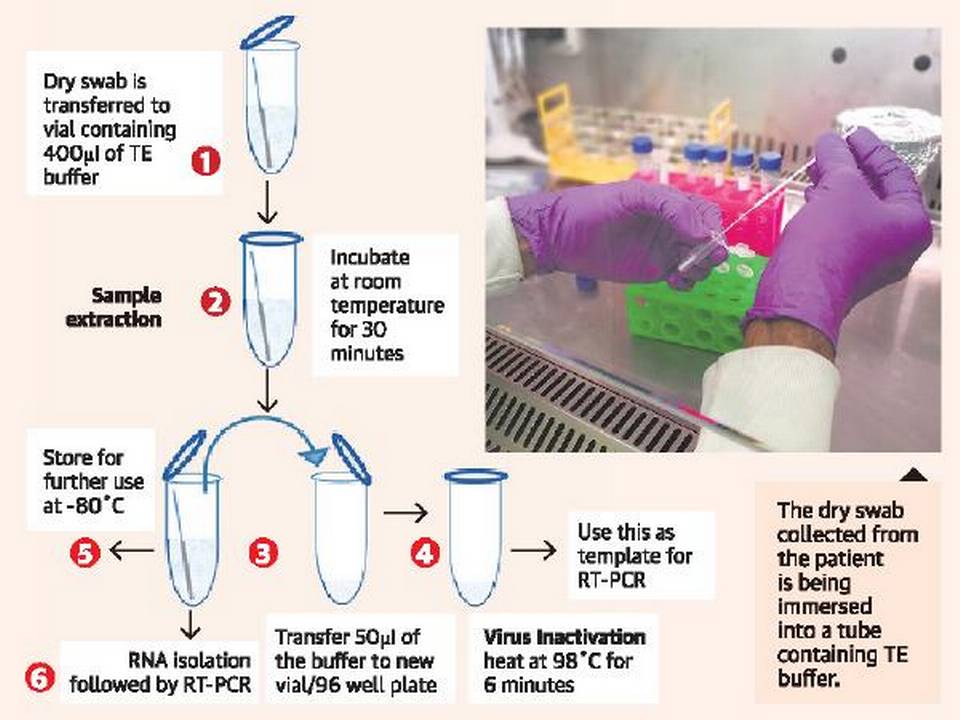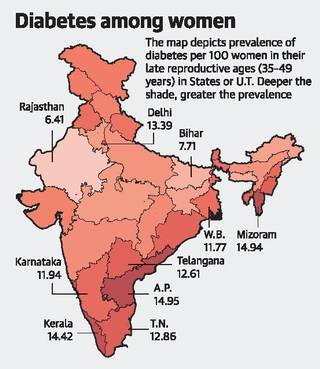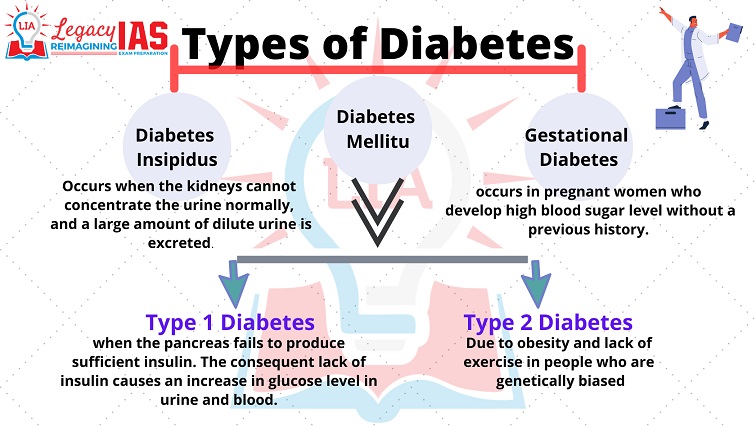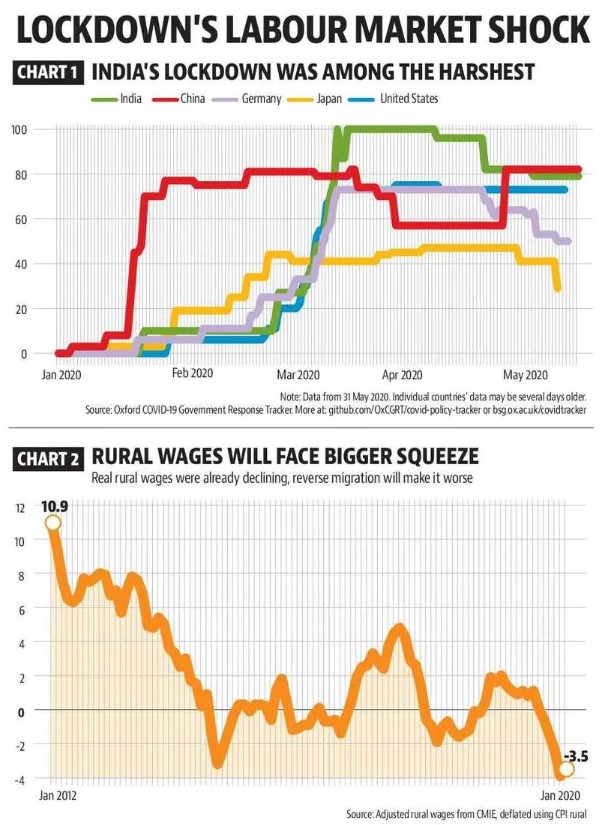Contents
- CCMB finds cheaper, more effective RT-PCR method
- Diabetes among women high in southern India
- Banking industry seeks relief from SC as DRTs remain shut
- Legal aid widened as domestic violence rises
- Migrant crisis may hurt incomes in poorer states
CCMB FINDS CHEAPER, MORE EFFECTIVE RT-PCR METHOD
Focus: GS-III Science and Technology
Why in news?
- Currently, the preferred protocol for testing uses the RT-PCR (Reverse Transcription-Polymerase Chain Reaction) test which is times consuming and expensive.
- Researchers have studied methods using RT-PCR with dry swabs which helps in bypassing the RNA isolation stage reducing time consumed and expense.
Why was this needed?
- In the usual method of testing, nasal swabs collected from a person are placed in a viral transport medium (VTM).
- From this, a part of the liquid is taken, the viral RNA is extracted and RT-PCR test is carried out.
- The remainder is stored. It is the step of isolating the RNA that takes time and is expensive.
- The standard method is also known to have a problem of false negatives.

What is RT-PCR?
- Real time RT-PCR is a nuclear-derived method for detecting the presence of specific genetic material from any pathogen, including a virus.
- Originally, the method used radioactive isotope markers to detect targeted genetic materials, but subsequent refining has led to the replacement of the isotopic labelling with special markers, most frequently fluorescent dyes.
- With this technique, scientists can see the results almost immediately while the process is still ongoing; conventional RT-PCR only provides results at the end.
- While real time RT-PCR is now the most widely used method for detecting coronaviruses, many countries still need support in setting up and using the technique.
-Source: Hindustan Times
DIABETES AMONG WOMEN HIGH IN SOUTHERN INDIA
Focus: GS-III Science and Technology
Why in news?
Researchers have identified that districts in Tamil Nadu, Kerala, Andhra Pradesh and Odisha have the maximum prevalence for diabetes among women.
The researchers sourced data from the National Family Health Survey-4 (2015-16) as it provides district-level health indicators for women.

Factors at play
- A skewed gender ratio as well unequal access to medical care has led to the disease being under-reported in women.
- The authors of the research paper also point to the higher levels of diabetes in the southern and eastern parts of India as being linked to diets of “rice-meat-and-fish” and a higher intake of “sweets and snacks” that were rich in trans-fats (These however weren’t explanatory).
- Diabetes-related mortality is higher among women in India.
National Family Health Survey
- The National Family Health Survey (NFHS) is a large-scale, multi-round survey conducted in a representative sample of households throughout India.
- Three rounds of the survey have been conducted since the first survey in 1992-93.
- The survey provides state and national information for India on fertility, infant and child mortality, the practice of family planning, maternal and child health, reproductive health, nutrition, anaemia, utilization and quality of health and family planning services.
The Aims of NFHS are:
- to provide essential data on health and family welfare needed by the Ministry of Health and Family Welfare and other agencies for policy and programme purposes
- to provide information on important emerging health and family welfare issues.
What is Diabetes?
- Diabetes is a metabolic disease that causes high blood sugar. The hormone insulin moves sugar from the blood to cells to be stored or used for energy.
- With diabetes, body either doesn’t make enough insulin or can’t effectively use the insulin it does make.
- Untreated high blood sugar from diabetes can damage nerves, eyes, kidneys, and other organs.
Different types of diabetes:

- Type 1 diabetes: It is an autoimmune disease. The immune system attacks and destroys cells in the pancreas, where insulin is made. It’s unclear what causes this attack. About 10 percent of people with diabetes have this type.
- Type 2 diabetes: It occurs when body becomes resistant to insulin, and sugar builds up in your blood. It stems from a combination of genetics and lifestyle factors.
- Pre-diabetes: It occurs when blood sugar is higher than normal, but it’s not high enough for a diagnosis of type 2 diabetes.
- Gestational diabetes: It is high blood sugar during pregnancy. Insulin-blocking hormones produced by the placenta cause this type of diabetes.
- Diabetes affects the five major organs namely, Kidney, Heart, Blood vessels, Nervous System, and Eyes (retina).
-Source: Hindustan Times
BANKING INDUSTRY SEEKS RELIEF FROM SC AS DRTS REMAIN SHUT
Focus: GS-III Indian Economy, Prelims
Why in news?
The banking industry has sought relief from the Supreme Court as the Debt Recovery Tribunals (DRTs) have remained shut for more than two months due to lockdown, seriously impeding recovery of dues.
Details
Non-availability of DRTs and Debt Recovery Appellate Tribunals (DRATs) during lockdown denied banking and financial institutions the essential forum for recovery of their dues.
Related acts:
- Recovery of Debts Due to Banks and Financial Institutions Act, 1993
- Securitisation and Recovery of Financial Assets and Enforcement of Security Interests (SARFAESI) Act, 2002.
The Supreme Court bench asked the centre about the functioning of DRTs and DRATs.
What are Debt Recovery Tribunals (DRTs)?
- Debt Recovery Tribunals (DRTs) are tribunals that effectively facilitate the loaned money recovery which involves banks and financial institutions from their customers.
- The primary goal and function of DRT is the recovery of loaned money from borrowers which is owed to banks and financial institutions from customers.
- The Recovery of Debts due to Banks and Financial Institutions Act (RDBBFI), 1993 – lead to the establishment of DRTs.
- The power of the tribunal is restricted to settling down the cases concerning the recovery of the due amount from non-performing assets as affirmed by the banks as per the RBI guidelines.
- DRT is presided over by a presiding officer who is appointed by the central govt. and who shall be qualified to be a District Judge.
- The Presiding officer of DST has a tenure of 5 years or the age of 65, whichever is earlier.
- Only under articles 226 and 227 of the Constitution – The Supreme Courts and High Courts have jurisdiction over this matter. No other courts have jurisdiction over this matter.
- Appeals against orders passed by DRTs lie before Debts Recovery Appellate Tribunal (DRAT).
Why were DRTs Needed?
- Banks and financial institutions were facing a very strange problem of recovering loans which they have given to any individual or business organizations.
- Because of this reason, the banks and financial institutions has been restraining themselves from giving out any loans.
- This situation called for an effective system to recover the loaned money from the borrowers.
- This concern gave rise to the establishment of Debt Recovery Tribunals (DRTs) following the passing of the Recovery of Debts due to Banks and Financial Institutions Act (RDDBFI), 1993.
- Functions of DRT
- DRT enforces provisions of the RDDBFI Act, 1993.
- It also enforces the Securitization and Reconstruction of Financial Assets and Enforcement of Security Interests (SARFAESI) Act, 2002.
Powers of DRT
- The Tribunal has the powers bestowed with the District Court.
- DRTs are fully empowered to pass comprehensive orders and can travel beyond the Civil procedure Code to render complete justice.
- DRTs can NOT hear claims of damages or deficiency of services or breach of contract or criminal negligence on the part of the lenders.
- DRTs can NOT express an opinion beyond its domain, or the list pending before it.
- DRTs can appoint Receivers, Commissioners, pass ex-parte orders, ad-interim orders, interim orders.
- DRTs can review their own decisions and hear appeals against orders passed by the Recovery Officers of the Tribunal.
- DRT can hear cross suits, counter claims and allow set offs.
Concerns / Issues with DRTs:
- The number of DRTs is not sufficient given the increasing number of cases.
- The time taken by DRTs in settling cases is too long.
- DRTs are not able to handle cases related to large borrowers.
- At times, the timely appointment of officials for DRT have not been made.
-Source: Times of India
LEGAL AID WIDENED AS DOMESTIC VIOLENCE RISES
Focus: GS-II Social Justice
Why in news?
The National Legal Services Authority (NALSA) has decided to open online legal assistance services by a panel of women lawyers in each district to come to the aid of victims of domestic violence and child abuse.
Cases of domestic violence and child abuse saw a major spike during the lockdown triggered by coronavirus outbreak.
What has been done so far?
- Nalsa has collaborated with state and district legal services authorities to establish ‘one stop centres’ (OSCs).
- Persistent efforts have been taken to provide legal assistance, through teleservices of female panel lawyers in every district.
- SC Judge observed that the lockdown has itself created psychological issues and violence within the family.
- Women have been burdened with more work; children are unable to go to schools. Adding to that, working at home has also had its impact on family life.
- Massive reverse migration will invariably lead to increase in poverty, inequity and discrimination.
Domestic Violence Act 2005
- The Protection of Women from Domestic Violence Act 2005 is an Act of the Parliament of India enacted to protect women from domestic violence.
- It was brought into force by the Indian government from 26 October 2006.
- The Act provides for the first time in Indian law a definition of “domestic violence”, with this definition being broad and including not only physical violence, but also other forms of violence such as emotional/verbal, sexual, and economic abuse.
- It is a civil law meant primarily for protection orders and not for meant to be enforced criminally.
How is Domestic Violence defined?
- Domestic violence is defined by Section 3 of the Act as:
- Any act, omission or commission or conduct of the respondent shall constitute domestic violence in case it:
- harms or injures or endangers the health, safety, life, limb or well-being, whether mental or physical, of the aggrieved person or tends to do so and includes causing physical abuse, sexual abuse, verbal and emotional abuse and economic abuse; or
- harasses, harms, injures or endangers the aggrieved person to coerce her or any other person related to her to meet any unlawful demand for any dowry or other property or valuable security; or
- has the effect of threatening the aggrieved person or any person related to her by any conduct mentioned in clause (a) or clause (b); or otherwise injures or causes harm, whether physical or mental, to the aggrieved person.”
- The Act goes on, through the section Explanation 1, to define “physical abuse”, “sexual abuse”, “verbal and emotional abuse” and “economic abuse”.
National Legal Services Authority (NALSA)
- National Legal Services Authority (NALSA) has been constituted under the Legal Services Authorities Act, 1987, to provide free legal services to weaker sections of society.
- Hence, NALSA is a Statutory Body.
- The aim is to ensure that opportunities for securing justice are not denied to any citizen by reasons of economic or other disabilities.
- As per the Legal Service Authorities Act, the Chief Justice of India shall be the Patron-in-Chief of NALSA.
Functions of NALSA
- Organise Lok Adalats for amicable settlement of disputes.
- Identify specific categories of the marginalised and excluded groups and formulates various schemes for the implementation of preventive and strategic legal service programmes.
- Provide free legal aid in civil and criminal matters for the poor and marginalised people who cannot afford the services of a lawyer in any court or tribunal.
-Source: Times of India
MIGRANT CRISIS MAY HURT INCOMES IN POORER STATES
Focus: GS-III Indian Economy
Why in news?
- The only high frequency indicators which are available for the period after the lockdown are the Purchasing Managers’ Indices (PMI).
- Both the manufacturing and services indices crashed to their lowest-ever values.
- Among the most visible economic impacts of the lockdown has been a massive reverse migration of workers to villages.
Economic Impact of Reverse Migration

- In 1957-58 less than 40% of non-farm jobs were located outside the village. This number increased to over 75% in 1983-84.
- It subsequently dipped and was around the 60% mark in 2015.
- The share of non-cultivation incomes has continuously increased during this period.
- Of the non-farm jobs located outside the village, 60% were located at least 50 kilometers away in 2008-09.
Interpreting the numbers
- Reverse migration also entails loss of income for migrant workers, and this can be very significant for poorer states.
- For example, migrant remittances had a share of 35% in Bihar’s gross state domestic product (GSDP).
- The unemployment rate was 6.1% according to the 2017-18 Periodic Labour Force Survey, the highest in four decades.
Impact
- The sudden exodus of migrants who have returned to their villages from the cities will push wages down even more.
- This will further squeeze earnings and subsequently demand.
- Weakness in demand may generate additional headwinds for revival of economic activity even in urban areas.
-Source: Hindustan Times



